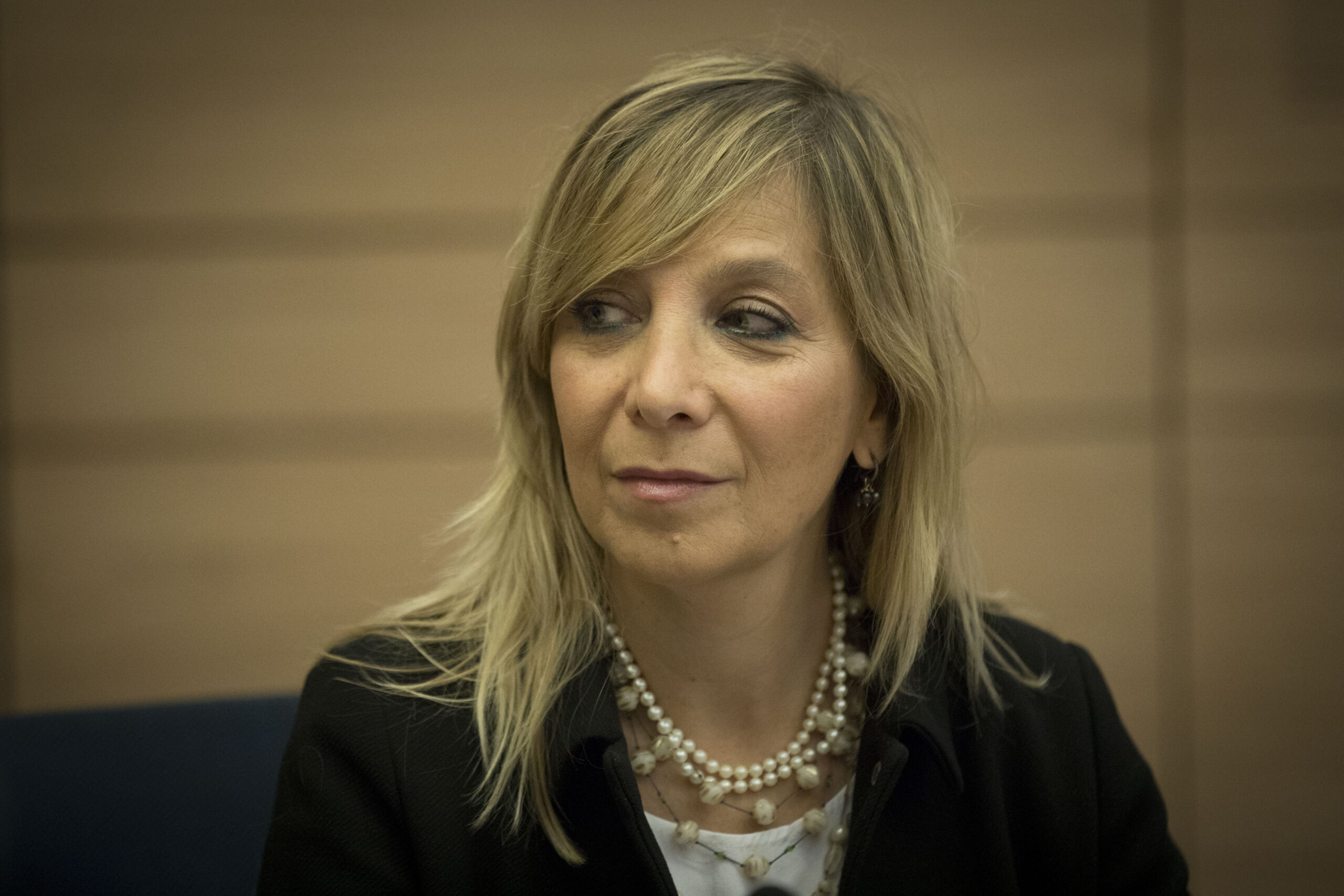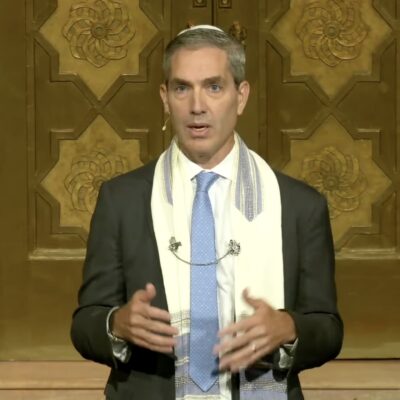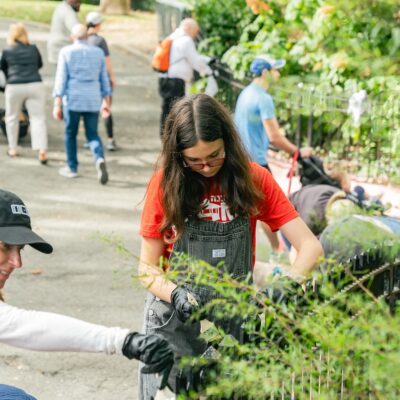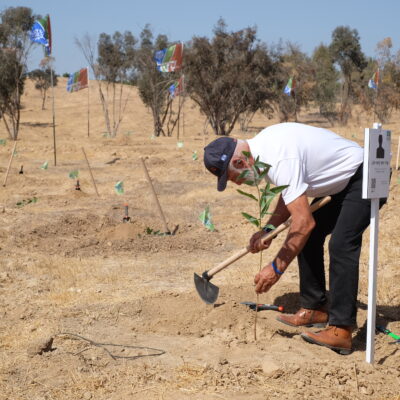Opinion
Communal transformation
Principles of the Jewish awakening
In Short
Our numbers are growing, American Jews burst with pride of identity – and yet many of our institutions remain in decline. This combination of circumstances is creating space for those once marginalized to come to the center with visionary approaches to Jewish life and belonging.
Our numbers are growing, American Jews burst with pride of identity – and yet many of our institutions remain in decline. This combination of circumstances is creating space for those once marginalized to come to the center with visionary approaches to Jewish life and belonging. They are seeding a new Jewish awakening. We cannot yet see all the ways in which they will create fundamental shifts in how we gather, what we emphasize within Jewish practice, who is welcomed into the wide tent of pluralism and how we organize our resources and power for the greater good. But there are principles that can guide our process of communal transformation, as we depart from a status quo that has served our Diaspora well for over a century.
First, we need people-centered Judaism and, more specifically, to center on those who are alive today. Our love of long-standing institutions and ways of life honors those who enabled our existence today. Yet our gaze backward ought not interfere with our capacity to experience the needs of today and to envision a future that calls us to responsibility and purpose. As earlier generations reached toward a vision of betterment, so are we called to do the same.

Jack Sooksan
Second, we see a need to invest in relationships, knitting people together with thick and authentic connection. We may bring the modality of learning in chavruta, study partnerships into the center of community life, seeing relationship-building as our primary purpose. In so doing, we could approach diversity of identity and ideology as a source of growth and become all the wiser for it. This means proactively including the many people who had been relegated to the periphery of Jewish life. We need to empower and embrace Jews of Color, three-quarters of whom feel pressed to explain their identities in Jewish contexts, as well as women, LGBTQ+ Jews, Jews by Choice, those considering conversion, people connected through family or friendship to Jews and individuals informally exploring Jewish practices and traditions.
Third, we need to espouse a radical notion of intra-religious pluralism, which focuses on actions over identities. Prior generations successfully lowered the barriers to belonging and access for American Jews, and now — through marriage, friendship and work — these social barriers fade more and more. This is not to say that Jews should in any way ignore norms of halachah (Jewish law), but to suggest that we can all buy into the notion that more people sincerely engaged with Jewish ideas, spiritual practices and community is an inherent good. In elevating Judaism as a wisdom tradition, accessible to all, we not only reduce the ignorance that drives hate, but expand the paths to Jewish belonging. Our focus should be on doing Jewish, not simply being Jewish in a passive way that prioritizes ancestry over action.
Fourth, we need financial models that enable more people to connect to community. Many synagogues and Jewish organizations still use a membership model based upon household makeup, rather than individual interests. Instead, we need a model centered around interest, life stage and affinities. This move away from one-size-fits-all membership models gives participants more agency to build a financial relationship based upon felt need and value. The current trend toward voluntary dues to synagogues only makes more transparent the same membership model of the past, in which the generous few subsidize the many. We see a more radical new financial model coming, which does not create financial barriers to belonging or consign us to transactional relationships in community. In turn, synagogues should glean data in order to better allocate resources based upon community needs — say, by offering more home-centered activities — rather than trying to impose the institution’s needs on the community. Greater financial data may in turn allow for better financial transparency, helping to nurture a more accurate understanding of the value of access to American Judaism and unearthing more paths to it.
Fifth, we need to harness expertise within our current organizations and put it to use seeding innovation. The dichotomy between Jewish “start-up” and “legacy” institutions is unhelpful, as some long-standing institutions remain dynamic, while many newcomers retain outdated structures and assumptions about power. Mainstay institutions can serve as incubators of change, funding innovative upstarts and supporting their leaders. Established institutions and philanthropies can also gather communal funds to train and equip spiritual entrepreneurs — perhaps reducing investment in buildings and other unnecessary overhead expenses, while incubating the new ideas that foster further growth within. Jewish start-ups can avoid the pitfalls of mission creep and the curse of trying to meet all the needs of their constituents by partnering with other organizations and creating new networks and coalitions that together form a tapestry of offerings. Start-ups would likewise do well to study mainstays, learning both from their mistakes and their origins as start-ups decades ago. As the pace of social change accelerates, so will the need for investment in research and development, ensuring that the work of culture change remains at the forefront of both mainstays and start-ups alike.
Sixth, we need to better distribute communal power. At present, many of the ideas and organizational innovations are coming from the periphery, but the funds and formal structures of leadership remain at the center. This mismatch keeps us from harnessing the boldest ideas and instead encourages reinvestment in the status quo. Further, it reinforces exclusionary social dynamics, which makes it difficult for many people to connect to Jewish community. This means increasing our emphasis on lay leadership, participatory philanthropy, representation — and the redefinition of clergy as specialized educators, counselors, spiritual guides and chief empowerment officers. In turn, as more people feel empowered to harness their own Jewish tools and harvest their own Jewish wisdom, Judaism will become more central to their lives.
Seventh, we need new modes of spiritual community and communal organizations. Beyond mindset, people-centered purpose, and empowerment, we need to consider technology and the hybrid nature of in-person and online experiences for many people. Bringing rural, suburban and urban centers of Judaism together would foster dynamism and create new pathways of efficiency. We see the bloom of more digital content creators who can scale spiritual, cultural and educational offerings on a national level, while local lay and professional leaders can center on relationship-building and empowerment. This in turn may encourage the reimagining of both physical and virtual spaces and new ways of bringing these spaces together. Curation matters more in a time of unbounded choice, as does a renewed emphasis on authentic connection, deep learning and a broader spectrum of spiritual practices and prayer experiences.
Finally, we need to awaken to new purpose. When we engage with our inherited communal fears and traumas, we see that while they are very real, they need not define our path forward. A century ago, American Jews reached for access, affluence and integration. Even as antisemitism remains an ongoing challenge, this core purpose was largely achieved, underscoring the vision and determination of those who came before us. Now, as American Jewry possesses greater influence, affluence and acceptance than ever before, a new purpose begins to emerge.
Judaism may now bloom as a wisdom tradition, accessible to all, providing tools to meet the deepest needs of today. Through spiritual practices that elevate gratitude and hope, we may build behaviors that strengthen mind, body, and spirit in the contemporary world. Through Jewish learning, text and ethics, we may bring new vocabulary and co47539mplexity to the ideological tribalism of today and help bring America ways of forging connections across difference and divide. Heeding Isaiah’s call for God’s house to be one for all people (Isaiah 56:7), American Judaism may meet the most pressing need of our age: creating a space of belonging, cultivating relationships and helping people flourish through community.
Rabbi Benjamin Spratt is senior rabbi of Congregation Rodeph Sholom in New York City. Rabbi Joshua Stanton is senior fellow at CLAL – The National Jewish Center for Learning and Leadership and rabbi of East End Temple, also in New York City. The two are coauthors of Awakenings: American Jewish Transformations in Identity, Leadership, and Belonging.

 Add EJP on Google
Add EJP on Google









